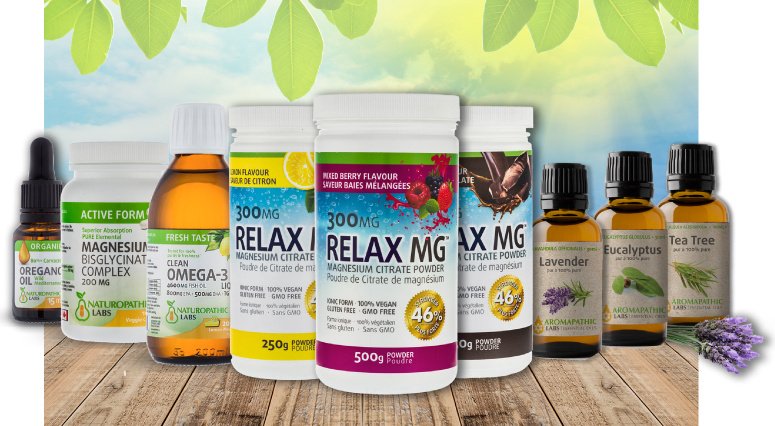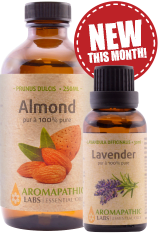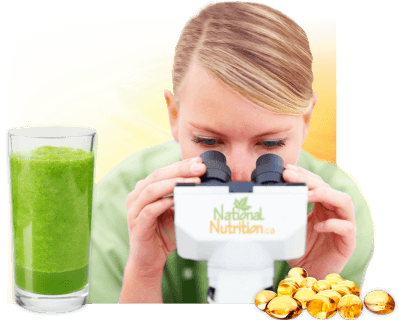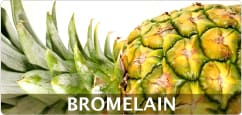Format
 Powder
Powder
454g
Dosage
15g (1-1/2 tablespoon). Add 1-2 Tablespoons to any beverage or recipe.
Important Information
100% organic!
- Source of Calcium
- Source of Iron
- 3g Omega-3 per serving
- High in Fibre
- Low Glycemic Index
Related Videos
No Related VideosArticles by a naturopathic doctor.
Organic Traditions, formulators of Canada’s top-selling natural food supplements. Their range of superfood powders include Acai powder, Ashwagandha powder, Chia seeds, Hemp seeds, Flax seeds, Wheat Grass powder, and Maca powder. Another favourite by them are their Organic Traditions lattes like Organic Traditions Matcha Latte, Chocolate Latte and Turmeric latte. Shop these high-quality superfoods right here at National Nutrition.ca
FLAX SEED BENEFITS
From helping with dry hair and skin, Flax Seed Oil also aids with eczema, male infertility, high cholesterol, hypertension, constipation and arthritis...
Flaxseeds are a rich source of alpha-linolenic acid (ALA), an omega 3 essential fatty acid. "Essential" means that the body does not produce the fatty acids on its own and therefore they must be taken in through the diet. Most North American and Western diets are very low in Omega-3 and extremely high in Omega-6.
Too many saturated fats are consumed and the ratio of ingested EFA's averages more like 20:1 Omega-6's to Omega-3's instead of the recommended 4:1.
The ALA in flaxseed oil helps maintain cholesterol levels because healthy fats build HDL cholesterol. HDL cholesterol is responsible for moving fat, from storage or plaques, into the liver where processing and excretion of fat occurs. By decreasing fatty buildup on arteries it helps to regulate blood pressure. It also provides valuable support for immune system function because many immune cells use omega 3 fats in their cell membrane. Having a properly functioning membrane allows the cells to do things like release packets of chemicals when they come in contact with foreign invaders. Since healthy fats play a large role in hormone formation, ALA can thus help optimize hormone levels and strengthen male fertility. Studies show that ALA is an anti-inflammatory compound that is beneficial for the treatment of arthritis.
Ensure your flaxseed oil is cold-pressed because heat damages the acids and creates free radicals. Some of the damaged fats turn into trans-fatty acids, which are well known for their promotion of cardiovascular disease. Refrigerate all liquid flaxseed oil supplements and keep capsules away from heat because they can become rancid. Using flaxseed oil is much more cost effective than capsules because numerous capsules must be taken to make an equivalent amount of liquid oil. Do not use flaxseed oil for cooking or frying.
Ground flaxseeds are also used as a nutritional supplement. They contain some EFAs along with fiber, magnesium and potassium. Golden flaxseed contains more fatty acids than the same amount of brown flaxseed.
CHIA (SALVIA HISPANICA)
Ch-ch-ch-chia. Did you know that the once popular commercial product known as the chia pet was actually the new super food? That's right, Chia is an excellent source of omega 3 fatty acids, protein, antioxidants, and both soluble and insoluble fibre. p.s. Please don't eat your chia pet ...
Chia seeds are derived from the plant called Salvia hispanica
Salvia hispanica is a flowering plant in the mint family and is native to central and southern Mexico and Guatemala. Chia was considered a staple food of the Aztec cultures, who would say that one small serving was all a man needed to run for a day. Australia is now one of the largest producers of chia in the world.
Chia seeds are high in omega 3 fatty acids, found normally from fish sources. It is both qualitatively and quantitatively high in complete protein, both soluble and insoluble fibre, as well as anti-oxidants, magnesium, calcium, iron and vitamin C.
A study conducted on Salba, a specific brand of Chia, found that 3.5 oz of Salba contained as much omega 3 as 28 oz of salmon, as much calcium as 3 cups of milk, and as much iron as 5 cups of raw spinach. Chia is also gluten free, a bonus for those with gluten sensitivities who have a hard time increasing fibre consumption. All that nutrition and it's also low in calories.
Studies have shown its use in the treatment of Type II Diabetes!
As a high source of fibre, it regulates blood sugar and insulin release by slowing digestion and therefore preventing the sugar "spikes" that are common after meals. Similarly, chia is said to be complimentary to exercise programs aimed at weight loss, as it keeps individuals feeling satisfied longer and therefore decreases total caloric consumption. It has also been shown to reduce inflammation (It decrease C- reactive protein, a marker of inflammation in our blood.), decrease blood pressure and has blood thinning effects, making it useful in the treatment and prevention of atherosclerosis, stroke and myocardial infarction (heart attack).
Chia can be consumed whole in seed form, ground and added to baking, or sprouted and used in salads and sandwiches. In Mexico, the seeds are soaked until they become gelatinous, and made into a drink called a chia fresco. Be cautious when buying chia that you are buying it from an agriculturally sound company, as to avoid high pesticide consumption.
Sprouting Foods:
Sprouting is the process of soaking, draining and then rinsing seeds at regular intervals until they germinate or "sprout". Sprouting can be done commercially, or in the privacy of your own home quite easily. Common beans for sprouting include mung beans, alfalfa, chickpeas, barley, lentils and azuki beans.
What are some benefits of sprouting?
Very simply put, sprouts offer the highest amount and quality of vitamins, minerals, proteins, fibre and enzymes per unit of calorie. Among its many nutritional claims, sprouting is shown to increase content of B vitamins, vitamin E and A. Some argue they are the most nutritious food we can eat. As sprouting or germination occurs, the seed is transformed into only essential content, while the nutritionally undesirable content is broken down, producing energy or power to change from seed to sprout. In this case, the protein or amino acid content is increased as seed becomes sprout, while the carbohydrate content is decreased or broken down to provide the seed with the energy to grow.
Sprouts are a living food, they continue to gain in vitamin and nutritional content even after they are harvested and to a certain extent when refrigerated. Compare that to store bought vegetables which start to lose nutritional content as soon as they are picked, and at times long before they arrive at the store. As an added benefit, sprouts are very easily assimilated and digested,while improving the overall efficiency of digestion. This is particularly important in the case of protein, which is often requires more work to digest. Sprouting significantly increases the protein content of many beans, while making it one of the easiest forms of protein to digest.
A study conducted on Salba, a specific brand of Chia, found that 3.5 oz of Salba contained as much omega 3 as 28 oz of salmon, as much calcium as 3 cups of milk, and as much iron as 5 cups of raw spinach. Chia is also gluten free, a bonus for those with gluten sensitivities who have a hard time increasing fibre consumption. All that nutrition and it's also low in calories.
How to do it yourself!
The most important tip when sprouting is to make sure that the container you choose to use allows water to drain from it. A jar with a mesh or cheese cloth top works well. If the sprouts are not drained in the recommended time and allowed to sit in the water, they will quickly rot. Each seed has slightly varied soaking and sprouting schedules, but in general, you want to initially soak the seeds (in the case of mung beans, you soak for anywhere from 8-14 hours), then drain the seeds and let them sit. Rinse and drain the beans 2-3 times/day until the beans have sprouted. (Mung beans only take about 1 day to sprout). You may put them in the fridge to prevent rottingonce sprouted for a maximum of two days. If not used within three days, the seeds usually go sour. As with most things, the fresher the better, so try to eat your sprouts as soon as they are ready add them to your salad, or make a live granola with sprouts, soaked nuts and dried fruits.
Sprouting is not dependent on weather or time of year. Sprouts can be grown from January to December. Sprouting does not work well in full sun, as the seeds tend to dry out. A window sill with indirect sun is the perfect spot to sprout. Mung beans can actually be grown in the dark, although it has been reported they lose some of their nutritional value.
- Reviews
- POST A NEW REVIEW





















